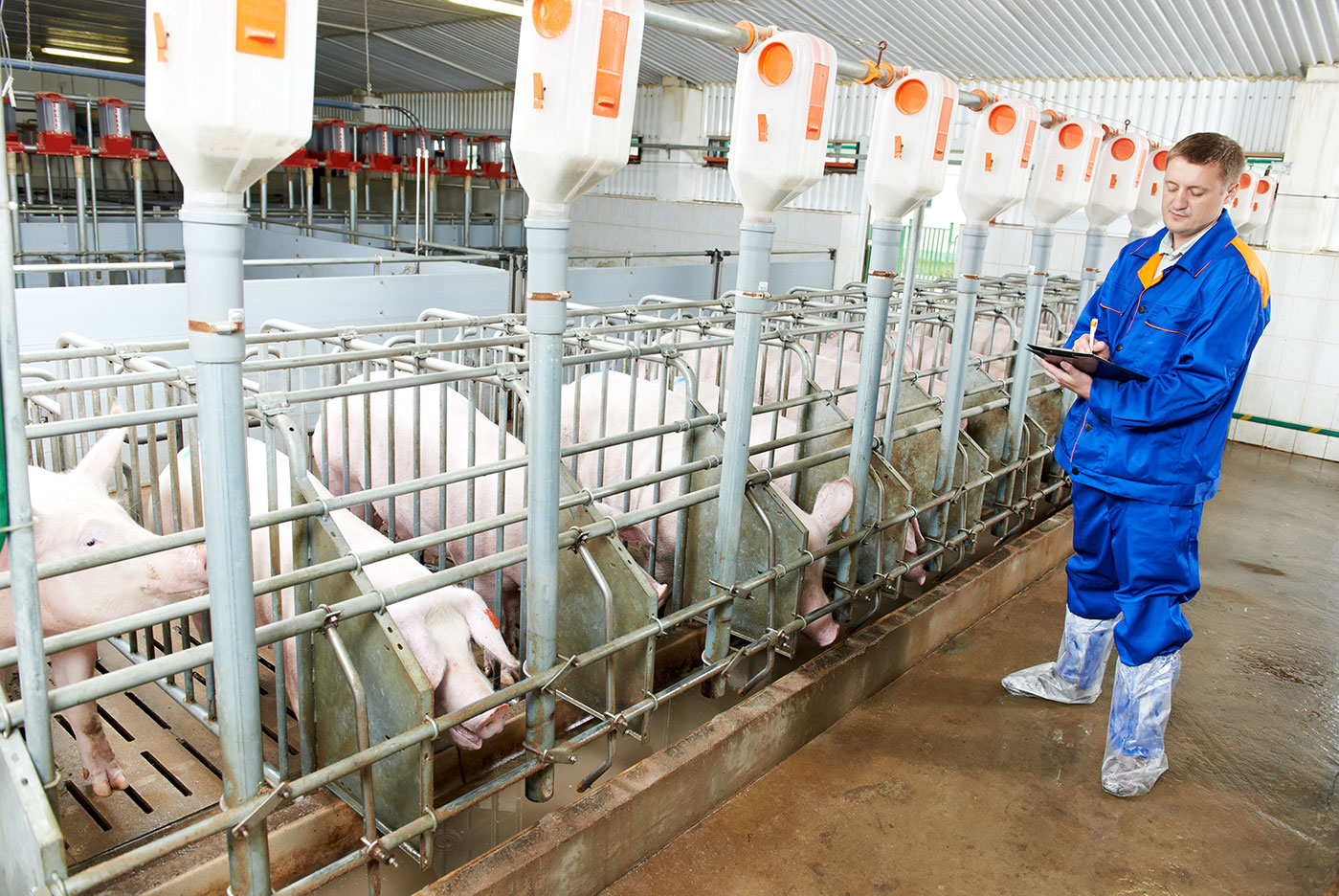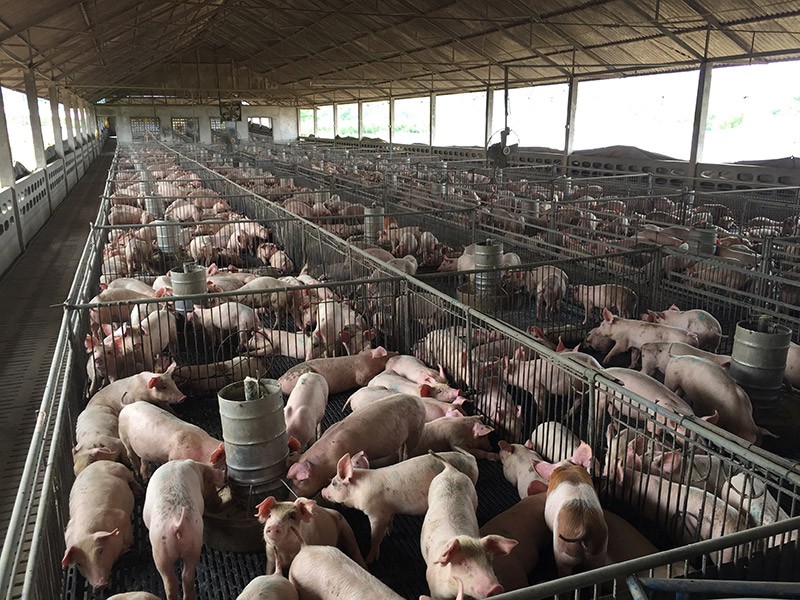Section 3 | Porcine Respiratory Disease
Industry
Page 12 /
Non-Infectious Factors Associated with PRD
Although there needs to be infectious factors (bacteria, viruses, and parasites) present to cause PRD, they are often not sufficient to cause disease on their own. Non-infectious factors are often required to produce disease or make it worse. The following section is based on an excellent review of the non-infectious factors associated with PRD1.
Environmental Factors
Any environmental change has the potential to predispose pigs to disease. The following are important environmental variables that affect PRD.
Temperature
Wide swings in temperature are stressful for pigs and this stress could suppress their immune systems and bring about PRD. When pigs are required to expend energy to keep warm, they put less energy into maintaining their immune systems. This makes them susceptible to disease. Other factors, including bedding type, stocking density, floor type, and feed intake can influence the required temperature. Aim to maintain a constant temperature using strategic environmental monitoring, ventilation, and insulation. Work with your veterinarian and an agricultural engineer to determine temperature requirements for the area you are concerned about.

Aerial Pollutants
Pigs need clean air to thrive. Pollutants such as dust, carbon dioxide, and ammonia can damage the lungs’ defences and predispose the animal to PRD. This occurs because the hair-like structures (cilia) within the respiratory tract of the can become damaged, allowing viruses and bacteria to enter deeper into lung tissue.

Humidity
High and/or variable humidity is also stressful for pigs and may require more effort for them to breathe. High humidity also produces favourable conditions for the growth of bacteria. Reducing humidity can reduce the pathogen load in the environment, thereby reducing exposure to your herd.
Space and Stocking Density
Smaller groups with separated airspace have reduced rates of competition for feed and water. When there is competition for resources, pigs can become aggressive and display bullying behaviour.
Lower stocking density also puts less stress on environmental control systems required to ensure constant temperature and humidity with low aerial pollutants.

Stress
Any deviation in the above environmental factors can produce stress in groups of pigs. Stress can suppress the immune system, predisposing pigs to disease.
For more information, visit the Antimicrobial Stewardship FAAST Review’s page on Key Aspects of Animal Husbandry.
Management Practices
All in, all out management is one of the most important practices you can employ to prevent PRD in your herd. Populations that are continually in flux, with new pigs added continually and a wide age range of ages may have higher levels of disease.

Nutrition
The immune response is requires significant energy in the pig. Further, certain nutrient deficiencies (i.e. vitamin E and selenium) can also impact the immunity of your herd. Working with your nutritionist to ensure you are meeting the requirements unique to each production stage on your farm is paramount to preventing disease.

References
- White, M. 2011. Porcine respiratory disease complex (PRDC): Part 2: Non-infectious factors. Livestock 16:44–46. doi:10.1111/j.2044-3870.2011.00035.x.